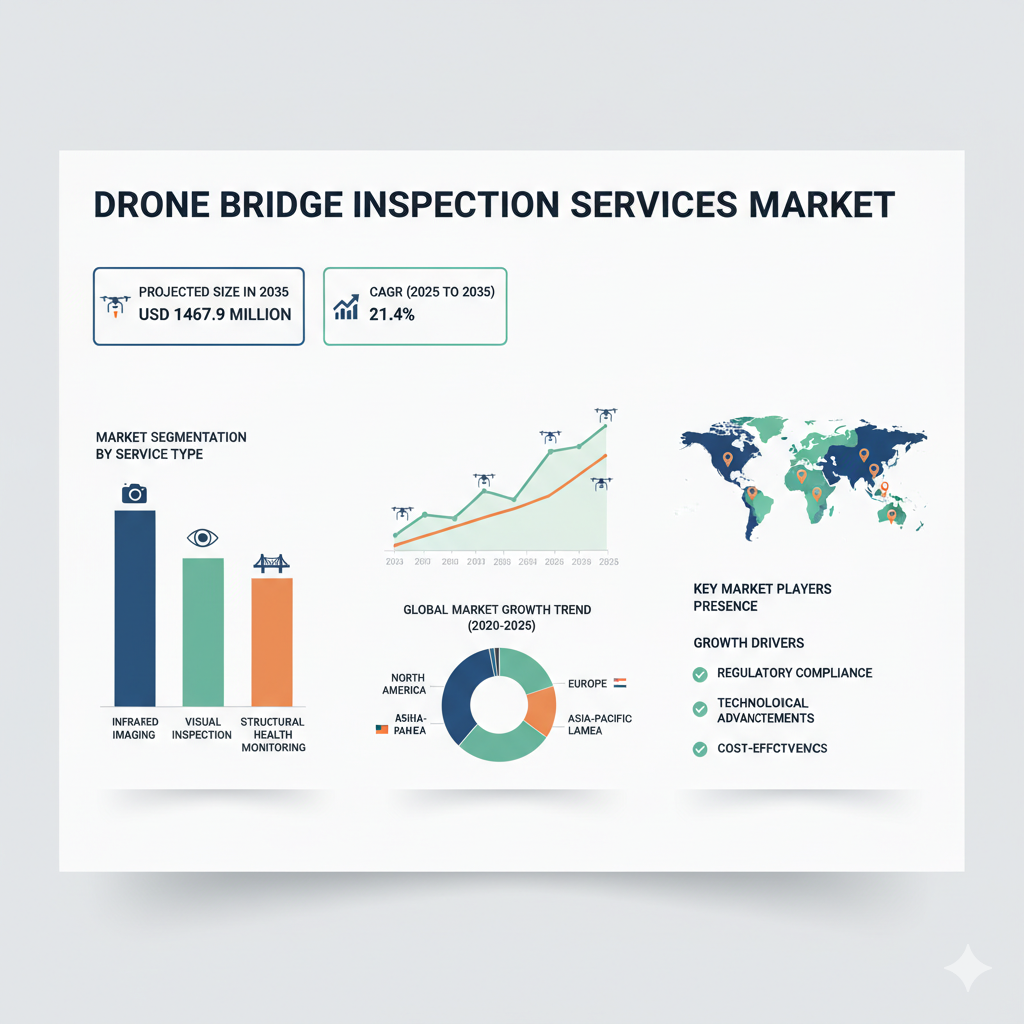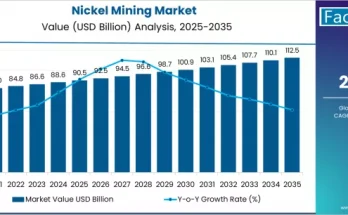The drone bridge inspection services market is valued at USD 211.11 million in 2025. As per Fact.MR analysis, the drone bridge inspection services will grow at a CAGR of 21.4% and reach USD 1,467.9 million by 2035.
This remarkable growth projection highlights the rising demand for cost-effective and efficient inspection methods. With increasing concerns about structural safety and the high cost of manual inspections, drones are quickly becoming the preferred choice. Their ability to capture high-resolution imagery, 3D maps, and real-time data enables engineers to identify cracks, corrosion, and other potential failures without putting human lives at risk.
Market Segmentation: Bridge Type & Region
By Bridge Type
In terms of bridge type, the market is categorized into road bridges and railway bridges. The road bridge segment dominates the market and is expected to expand rapidly in the coming years. Road bridges make up a significant portion of global infrastructure, and their large numbers, combined with heavy traffic loads, make regular inspections essential. Drones can efficiently survey vast stretches of road networks, minimizing downtime and traffic disruptions while providing accurate data for maintenance decisions.
The railway bridge segment also represents a significant growth area. Railway operators are increasingly using drones to inspect bridges in difficult-to-access or remote areas. These UAVs reduce the need for costly scaffolding or manual climbing, enabling safer, faster, and more precise evaluations. Drone inspections on railway bridges are particularly valuable for monitoring vibration, structural movement, and wear caused by high-frequency train operations.
By Region
Regionally, the market is divided into North America, Latin America, Europe, East Asia, South Asia & Oceania, and the Middle East & Africa. North America currently leads the market, driven by the rapid adoption of drone technology and strong government support for infrastructure modernization. Europe follows closely, with countries investing heavily in smart infrastructure and adopting UAVs as part of their digital transformation efforts.
In Asia, the expansion of transportation networks and increased investment in infrastructure resilience are boosting demand. Countries such as China, Japan, and India are expected to be major contributors to regional growth. Meanwhile, the Middle East and Africa are witnessing gradual adoption as governments focus on maintaining critical transportation corridors and large-scale development projects.
Browse Full Report: https://www.factmr.com/report/drone-bridge-inspection-services-market
Recent Developments & Competitive Dynamics
The drone bridge inspection services market has seen significant technological advancements and growing competition among key players. Recent developments include the integration of artificial intelligence and machine learning into inspection drones, enabling automated detection of cracks, rust, and deformation in bridge structures. Companies are also developing advanced thermal imaging and LiDAR systems to provide comprehensive inspection data, even in low-visibility conditions.
Leading players such as DJI Innovations, Flyability, Cyberhawk Innovations, AeroVironment, Delair, and PrecisionHawk are actively investing in R&D to expand their service portfolios. DJI continues to dominate the commercial drone market by offering high-precision UAVs with enhanced AI and data analytics capabilities. Flyability, known for its collision-tolerant drones, has gained traction in confined or hazardous environments. Cyberhawk Innovations, a pioneer in industrial inspection, leverages cloud-based analytics to deliver actionable insights to infrastructure managers.
Competition in this market is intensifying as companies seek to differentiate themselves through technology, service quality, and regional presence. Partnerships with civil engineering firms, infrastructure owners, and government agencies are becoming common strategies for expanding operational scope and ensuring compliance with local regulations.



